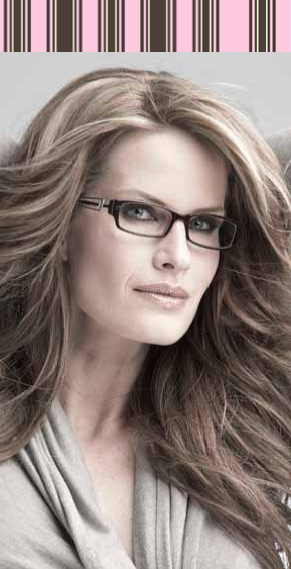By Paddy Kamen
 Monika Schnarre, the youngest woman ever to win Ford’s Supermodel of the World competition, is now the proud designer of an eyewear collection in partnership with Optiq Frames.
Monika Schnarre, the youngest woman ever to win Ford’s Supermodel of the World competition, is now the proud designer of an eyewear collection in partnership with Optiq Frames.
Schnarre won the modeling competition when she was only 14, subsequently gracing the cover of American Vogue and runways the world over. Not many young women would have the poise and confidence to live that kind of high-pressure life and Schnarre allows that it was challenging: “I felt this great sense of expectation, perhaps self-imposed, that I had to be a perfect role model, completing high school while working internationally, getting straight ‘A’s, and also living a wholesome lifestyle, which isn’t easy in the modeling world.”
By age 18, Schnarre had given up full-time modeling and moved to Los Angelesto pursue acting. She tested herself by not relying on her savings, throwing herself into another uber-competitive world. “It is definitely very hard to break into acting. I was lucky because I started doing commercials right away and landed a job on The Bold and the Beautiful and then The Beastmaster. At the same time, I took a two-year certificate program in journalism at UCLA.”
After appearances on many leading television shows and hosting red-carpet events, Schnarre decided that she wasn’t meeting her full potential. She left LA and moved back to her hometown of Toronto in 2008, hoping to get more television work.
“The industry was really hurting at that time, and I wasn’t going to sit around waiting for a job to materialize,” she explains. “I realized that I have good name recognition and a love for fashion, so I decided to turn that into a woman’s apparel line.”
Having seen many fashion designers go broke, Schnarre took a low-risk approach and began working with the Shopping Channel. “I knew what I was missing in my own wardrobe and I instinctively knew how to address the needs of tall women like myself,” she explains. “My first collection, Tall, sold out. That collection is now sold through retail stores and now I also design clothes for the average woman, plus accessories, including bags and jewelry.”
It was a chance meeting through a mutual friend that led to Schnarre connecting with Joe Nadler, president of Optiq Frames. “I’ve always loved eyewear and have many pairs in my collection, even though I don’t have a prescription. I liked the Nadlers immediately. It was essential to me that I be involved in the process as I didn’t want to just stick my name on something that I didn’t believe in. They were receptive to my ideas and so a partnership was created.”
Says Nadler: “I saw working with Monika as an outstanding opportunity. I love the fact that she is Canadian and I appreciate what she is invoking with her brand.”
As Nadler points out, many manufacturers simply obtain a license to use a designer’s name and, “slap the name on with little or no actual involvement from the designer. Our partnership with Monika, is, in contrast, very hands on. She is easy to work with and knows how to articulate her brand. And with all her years in the fashion industry she is very much in touch with what women want to wear. I’m happy to say that we are all extremely proud of the collection.”
The Monika Schnarre eyewear collection of prescription frames and sunwear features designs that embody Monika’s fashion philosophy of simple sophistication and affordability. “The women I design for are working women, like me. They don’t have a fortune to spend on eyewear and yet they insist on designs that further their self-expression and sense of style,” she says.
The launch of the collection this spring will find Schnarre on Breakfast Television and in major women’s magazines. She will appear at trade shows with Optiq Frames and even at customer locations. Video footage has been shot for television and print and radio exposure will be included. “She is prepared to do what it takes to promote the collection and her elegance and recognition factor demand attention,” says Nadler.
All Optiq Frames eyewear, including the Monika Schnarre collection, is manufactured in the same leading factories as many other well-known brands. “We pride ourselves on the quality of our frames,” notes Nadler. “That quality, combined with accessible design features and reasonable pricing, assures us that the target market of women 30 and over is going to love these frames.”
Each frame comes with a lens cloth and designer case, also created by Schnarre, both in her signature colours of blush pink and chocolate brown. Frames are on-trend in a variety of styles (roughly 50 per cent metals and 50 per cent Italian acetates), featuring tortoise shell, sleek metallic temple details and current colours.
It seems there’s no stopping Monika Schnarre as she turns her early success on the world’s runways and her experience in fashion, acting and media to the creation of products that help women express themselves with confidence and style.


